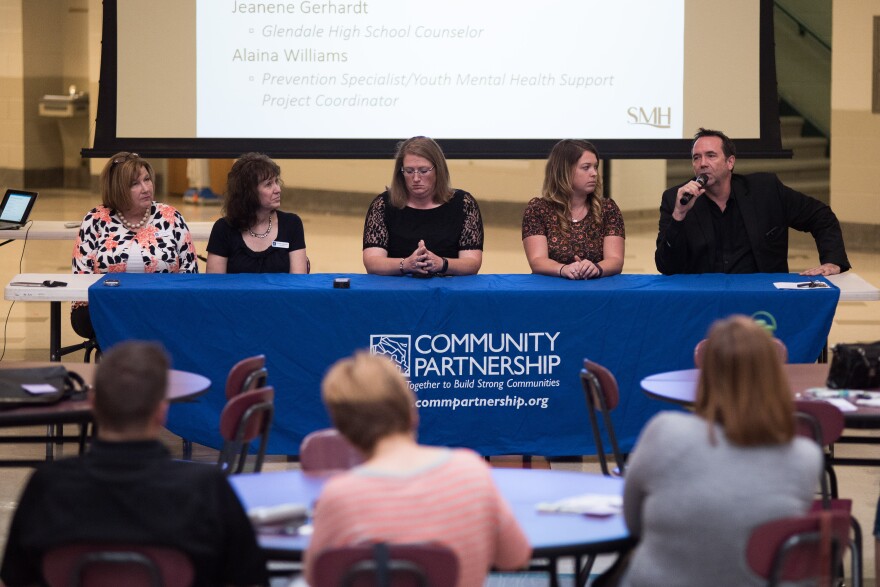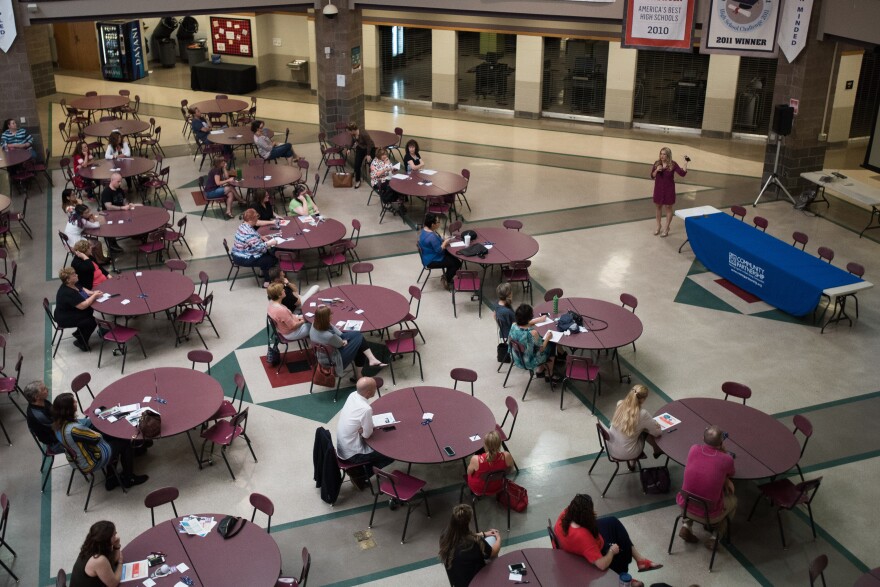Nearly 17 percent of Greene County students grades six-12 considered attempting suicide within the past year. That’s according to a student survey conducted by Missouri Department of Mental Health.
And officials say the threat of suicide has been on the rise.
On Thursday, Burrell Behavioral Health, Community Partnership of the Ozarks (CPO) and Springfield Public Schools (SPS) joined to host A Million Reasons Why Not: Addressing Suicide in Our Community. About 85 people attended the event at Central High School.

“If you are a parent, (the event is) just to increase knowledge and awareness of points out there,” said Rhonda Mammen, director of SPS Counseling Services. “Sometimes as parents we trust our students to tell us when things are not right, but the nature of adolescence typically is that the parents are the last to know.”
The panel discussion focused on debunking common misconceptions about suicide, offered signs and symptoms to look for, and strategies for how to respond appropriately.
“The most important myth that I bring up tonight is that talking about suicide gives them the idea of suicide,” said Rikki Barton, director of the Prevention Resource Center at Community Partnership of the Ozarks. “The opposite is true. Bringing it up can actually provide relief.”
Barton encourages community members to have conversations with youth and bring forth the message that it is okay to talk about suicide.
The second myth, according to Barton, is that if a person is determined to kill themselves, there isn’t much that can be done to stop them.
“Even the most depressed person is going back and forth on whether they want to die up until the moment they attempt,” Barton said. “And the truth is most people don’t want to die; they want the pain to stop.”
The pain leads to another myth about youth suicide: While teenagers think they are depressed they may just be dealing with the emotional turmoil of growing up.

According to Barton, one in five adolescents has a diagnosable mental health disorder, and the prevalence of depression in adolescents and young adults increased from 8.7 percent in 2006 to 11.3 percent in 2014.
“Depression is not just something they made up; it is a serious mental health issue that is treatable but needs to be treated,” Barton said. “They want to stop feeling as bad as they are feeling and because of that suicide has become an option. But the truth is conversations, therapy, things that they can work through to overcome these feelings are a solution.”
Warning signs that indicate an individual may be experiencing depression or thought of suicide, according to Barton, includes: Talking about or making plans for suicide; expressing hopelessness about the future; or displaying worrisome behavioral cues or marked changed in behavior. Changes in behavior may stem from things like withdrawal from or change in social connections, changes in sleep patterns, anger or hostility that seems out of character or out of context; and recent increased agitation or irritability.
Barton summed it up with “If something has drastically changed for the worse, that is your warning sign. That’s when you know a conversation needs to happen and the potential to link them with a professional for some help.”
The school district and some community organizations offer resources to help youth experiencing these symptoms.
According to Rhonda Mammen, in the coming academic year SPS will implement the Signs of Suicide Youth Curriculum into its ninth grade health class, a course required for all students. It will be co-taught by school teachers and counselors. Similar teachings will be organized by school counselors in the district’s middle schools as well.

CPO also offers a one-day, eight-hour training called Youth Mental Health First Aid. It is $10 per person and includes lunch. More information about the training can be found at www.cpozarks.org/YMHSP.
Alexis Grojean, a sophomore at Nixa High School, was suicidal for a time. On Thursday, she informed the crowd that she was able to seek help from her parents.
“I told my dad about an attempt I had made; I reached out,” Grojean said. “I was really scared about it because I didn’t know if my parents were going to react the way I didn’t want them to react. I didn’t know if I was going to get the help I needed, but I did.”
She’s now getting treatment at Burrell, and says “If there are other peers here my age, I would tell them that suicide is not the only way out.”
Grojean called for parents to listen to their kids and ask how their day was.
“It helps having my parents there, and knowing that I’ve been suicidal. It helps getting it out and telling so that they know what to look for as parents,” said Grojean.
Grojean’s mother, Rhonda, encouraged other parents to try their best to identify the underlying problems in their kids’ lives.
With tears in her eyes, she said, “When they say they are fine, don’t believe them.”
Assistance for students and others with suicidal thoughts is available through the following:
Suicide Hotline Number: 800-273-TALK (8255) 24/7
Burrell Behavioral Health Crisis Line: 417-761-5555
Teen Text Crisis Line: 855-449-1212 (Text Only; 3 pm-midnight daily)


